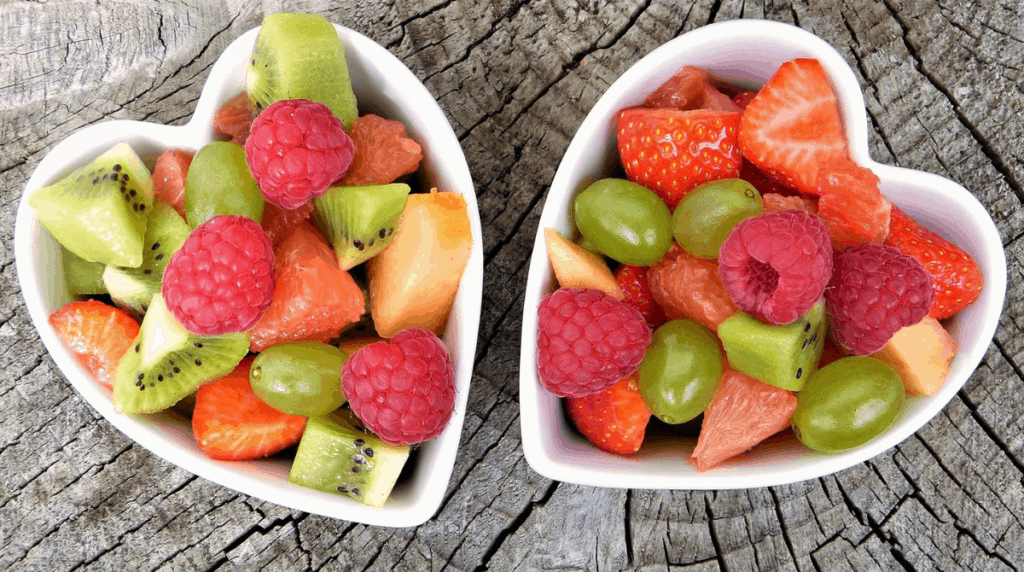Eating fruit and vegetables is one of the best things we can do for our health, as well for our enjoyment of life. A diet rich in fruit and vegetables contributes to well-being, and helps prevent and combat numerous diseases and conditions.
The beneficial effects of eating abundant fruits and vegetables include:
- reduce the risk of cardiovascular disease
- protect against degenerative diseases of the kidneys and lungs
- contribute to the prevention of diabetes and cancer
- help maintain good digestion
- promote weight loss, through fibre and satiety
- improve the appearance of the skin and hair.
Fruits and vegetables contain abundant water, to keep you hydrated; they are rich in proteins (depending on which fruit or vegetable) which help building tissue and their carbohydrates help generate energy.
Their wide array of vitamins, minerals and fibres help regulate the body’s metabolism.
However, for maximum benefit, they should be eaten fresh: left in the fridge for too long, they lose some of their vital vitamins and nutrients.
Among the most important vitamins found in fruits and vegetables are vitamin C, an antioxidant which protects human cells from the effects of free radicals, and vitamin A, a carotenoid that provides protection against environmental factors, such as smoke and air pollution.
The minerals present in fruits and vegetables are: iron, potassium, magnesium, calcium, phosphorus, copper, iodine, sodium and zinc.

Fruit and Vegetable Fibres are very beneficial:
- soluble fibres, mainly contained in fruit, increase the absorption of fats and proteins, help weight loss and help regulate intestinal functions
- insoluble fibres, on the other hand, found mainly in vegetables, slow down the absorption of carbohydrates and help reduce the concentration of glucose in the blood.
It’s recommended that you consume at least 5 servings of fruit and vegetables a day, the amount should be increased in the winter, when it’s much more difficult to eat enough fresh fruit and vegetables.
Many fruits and vegetables are particularly high in antioxidants whose function is to effectively fight free radicals so that they do not damage our cells.
These include apples, strawberries, apricots, kiwi, figs, pears, carrots, cabbage, beetroot, fennel, radishes, spinach, lettuce, aubergine, broccoli, courgettes and peppers.
An easy, good way to get a wide array of antioxidants from fruits and vegetables is to simply eat the rainbow: include different colours of vegetables every day, or at least 3-4 times a week.
Each colour corresponds to particular micronutrients and protective substances such as vitamins C, A, E, minerals such as zinc, selenium and many others.
Red indicates the presence of lycopene and anthocyanins, which help the natural protection of cells from free radicals.
Yellow / orange is a source of carotenoids and flavonoids that help protect eyesight, can prevent cellular ageing and strengthen the immune response.
Green indicates the presence of chlorophyll, magnesium, folic acid, carotenoids and polyphenols which help strengthen blood vessels, bones, teeth and can improve the functionality of the nervous system.
Purple / blue indicates the presence of anthocyanins, potassium and magnesium which can fight capillary fragility and prevent atherosclerosis, helping to improve memory.
White assures a supply of quercetin, sulphur compounds, flavonoids, potassium and selenium that can regulate cholesterol levels and maintain blood fluidity as well as have beneficial effects on bone tissue.
Vegetables are rich in fibre, especially their peels, and so should always be prepared unpeeled; (in addition to fibre, the peel contains additional vitamin and mineral salts).
